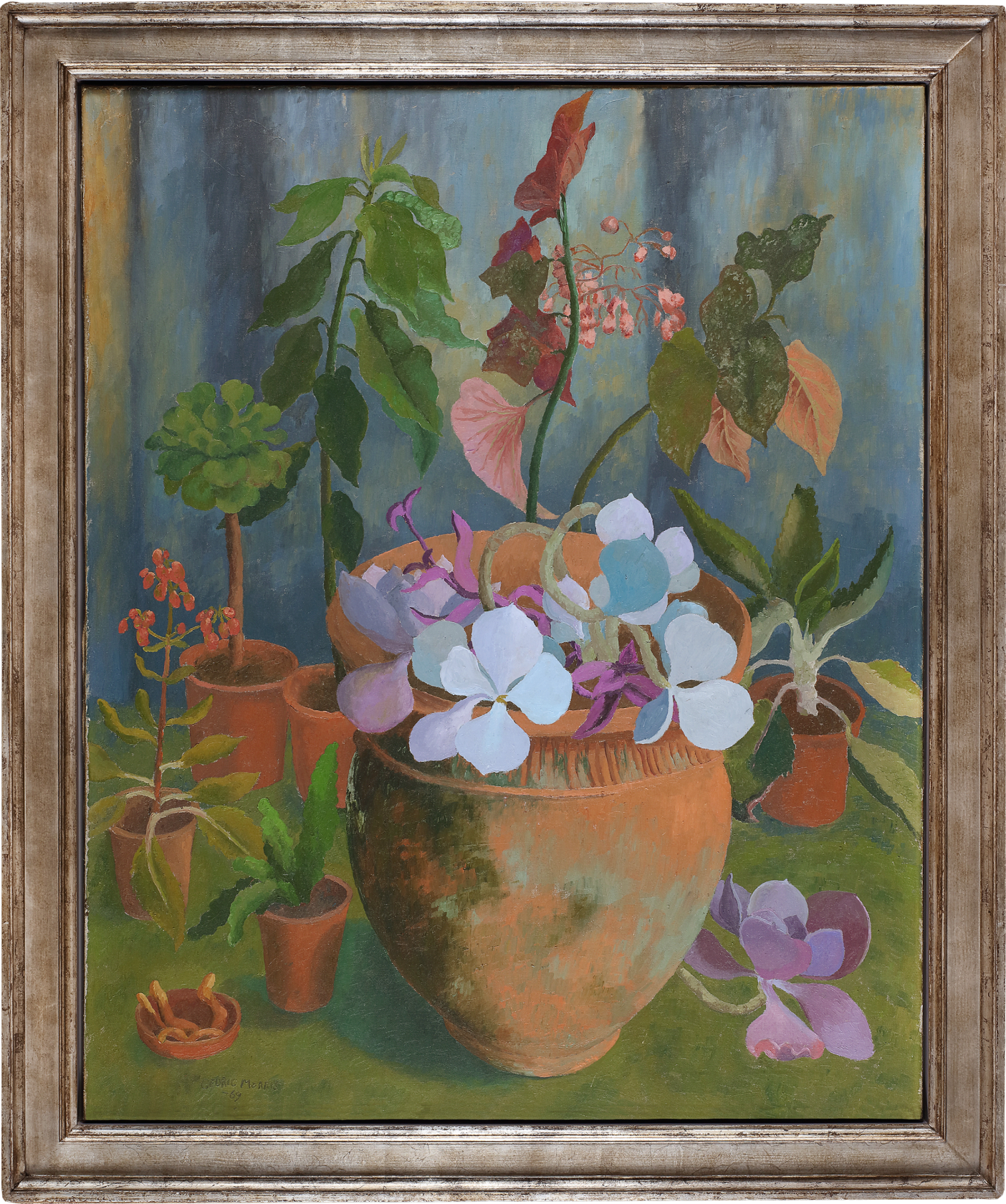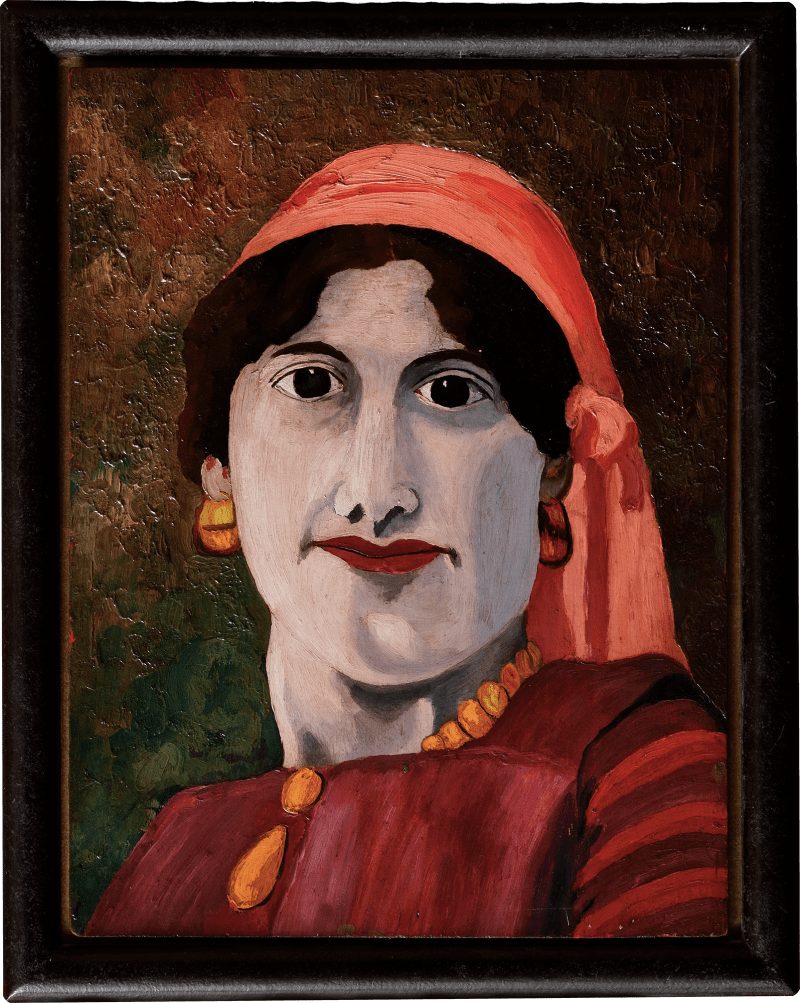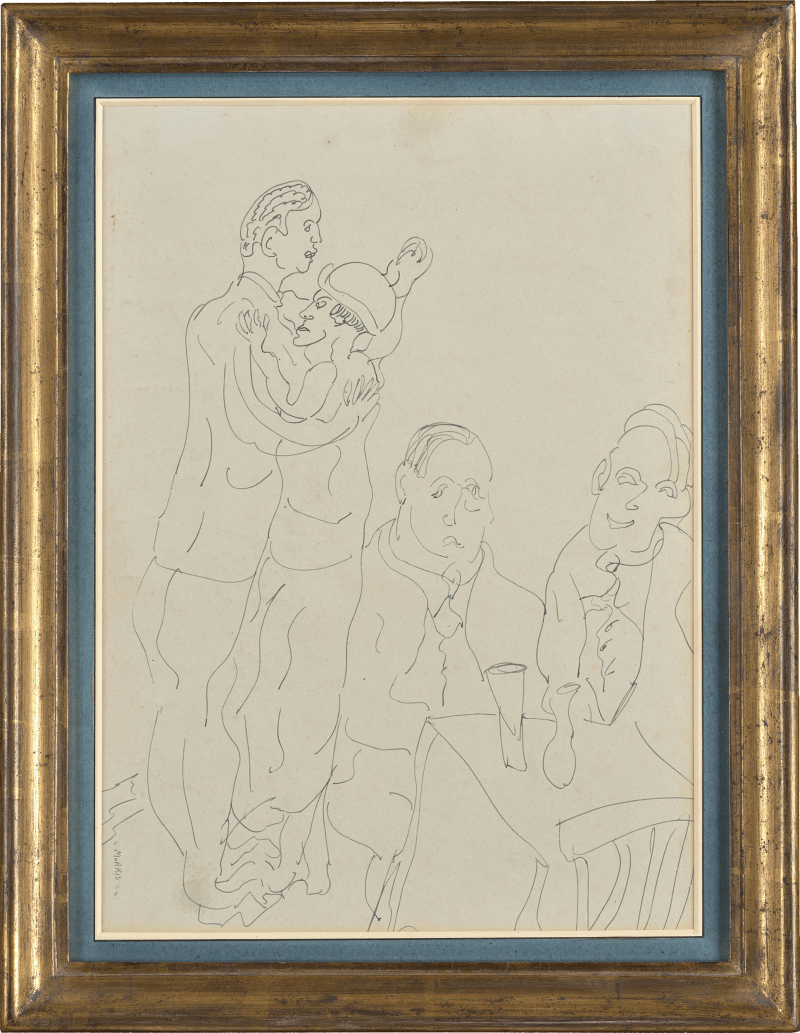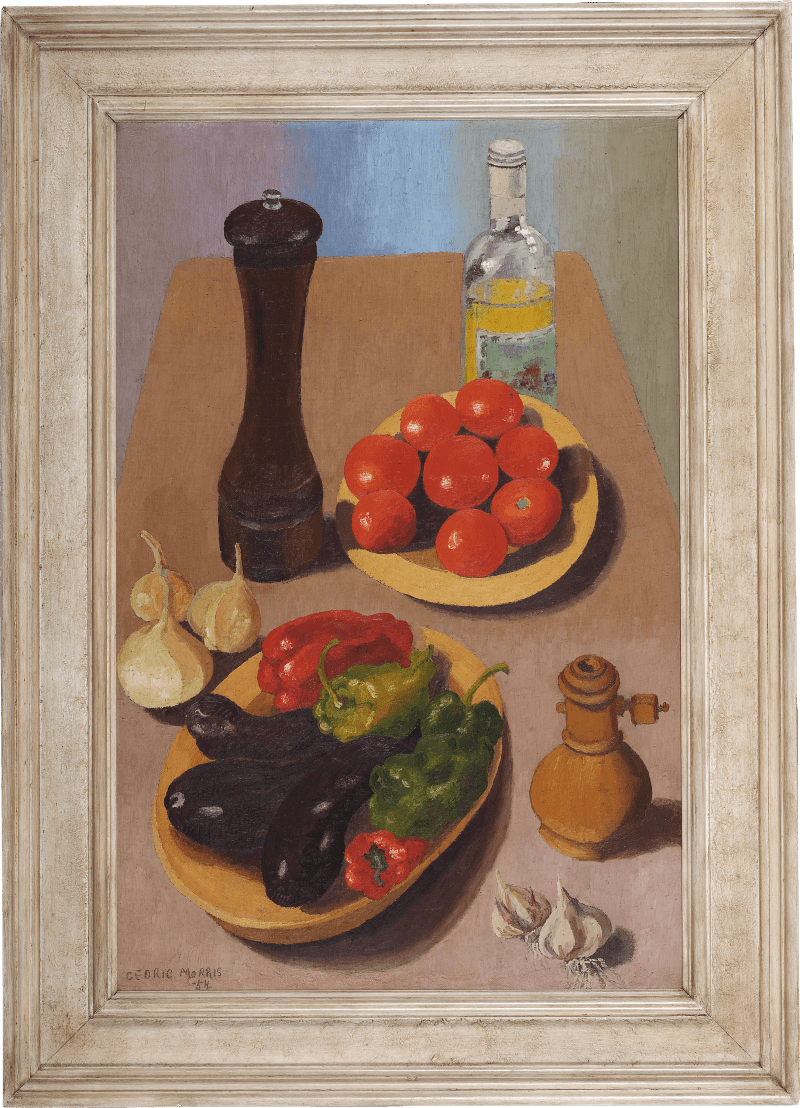‘He liked plants for their statuesque formal qualities, even their ferocity, and painted them with pudgy, frontal insistence on large design because he had known them all as individuals up from the soil.’ – Christopher Neve[1]
This distinguished still-life by Cedric Morris is one of the largest recorded works within his oeuvre and reveals on a monumental scale his intense originality as a painter of nature in all its colour and forms.
In the winter months at Benton End when the days were shorter and the temperature dropped, Morris would paint indoors using his vast collection of plants and pots to compose imaginative arrangements which he would then translate onto canvas. The present work, painted in November 1969, is one such work and demonstrates how even in his later years Morris was unfaltering in his faithfulness to direct observation combined with horticultural accuracy. At the centre of the composition, cascading from the foregrounded terracotta pot, we can observe the...
‘He liked plants for their statuesque formal qualities, even their ferocity, and painted them with pudgy, frontal insistence on large design because he had known them all as individuals up from the soil.’ – Christopher Neve[1]
This distinguished still-life by Cedric Morris is one of the largest recorded works within his oeuvre and reveals on a monumental scale his intense originality as a painter of nature in all its colour and forms.
In the winter months at Benton End when the days were shorter and the temperature dropped, Morris would paint indoors using his vast collection of plants and pots to compose imaginative arrangements which he would then translate onto canvas. The present work, painted in November 1969, is one such work and demonstrates how even in his later years Morris was unfaltering in his faithfulness to direct observation combined with horticultural accuracy. At the centre of the composition, cascading from the foregrounded terracotta pot, we can observe the leaves of Round-leafed Navel-wort (cotyledon orbiculate), intertwined with the deep violet leaves of Purple heart (tradescantia pallida). Papery Begonia leaves delicately tower over the composition, and a proud Echeveria holds centre left. Clustered around the central pot we see a collection of succulents that had been acquired by Morris throughout his life on his travels abroad.[2] We know from Frances Mount, who moved into Benton End to assist Morris with the garden in the mid-1960s, that ‘Cedric loved plants with definite shapes, the ruder the better. If you look at his pictures, the importance of the shape of each flower, its length of stem is very evident, each flower has to stand on its own. He liked to grow small, strong plants like pinks that concentrated the eye.’[3] She also recalled with fondness his childlike excitement when anyone brought him a new plant and when his eyesight deteriorated, he would identify plants by feeling and smelling their leaves.[4]
In 1968 Morris was the subject of a major retrospective exhibition at the National Museum of Wales, Cardiff which later toured to four further destinations including Merthyr Tydfil, Wrexham, Swansea, and Colchester. The exhibition included 118 oil paintings and 18 drawings painted between 1920 and 1967 and was an important acknowledgment of Morris’s contribution to the development of twentieth-century British art. It was also an opportunity to remind the viewers of Morris’s accomplishments beyond the art world; in the exhibition catalogue Lett remarked that the exhibition represented only a tenth of Morris’s output, ‘which would be mightier still but for the creative experiment in horticulture for which he is celebrated’.[5] We are reminded of the symbiotic relationship between Morris’s two passions - art and horticulture - in this work which imparts through its scale the artist’s profound admiration and appreciation for nature in all its forms.
Christopher Neve, a foremost authority on twentieth-century British art, astutely notes the ‘statuesque’ quality of Morris’s plant paintings, which pertains particularly to the qualities of this still life. Depicted in smooth brushstrokes, the terracotta pots portrayed here maintain the grandeur of ancient urns, imbuing the work with an almost spiritual quality and elevating the subject above and beyond the traditions of still-life painting at this date.
Throughout the 1970s Morris continued to exhibit his work with solo shows staged in 1975, 1978, and 1979. Two further exhibitions were staged in 1980 and 1981 and in 1980 the Tate acquired three works by Morris for their permanent collection: a portrait of Lucian Freud, a double portrait of David and Barbara Carr, and Iris Seedlings. When Morris died in 1982 at the age of 92 his plants were, at his request, distributed around the country between friends with many of his favourite irises being taken by the British Iris Society. The remaining paintings, a mixture of landscapes, still-lifes, and portraits, are now in the collection at Gainsborough’s House in Sudbury and can be viewed in their recently refurbished galleries.
[1] Christopher Neve, ‘The Outside: Cedric Morris as Painter and Gardener’, Country Life, vol. 175, April 26, 1984, pp.1167.
[2] We are grateful to Clive Lundquist for identifying these species.
[3] Quoted in Hugh St. Clair, (2019) A Lesson in Art and Life: The Colourful World of Cedric Morris and Arthur Lett-Haines. Pimpernel Press Limited, pp. 181-182.
[4] Hugh St. Clair, (2019) A Lesson in Art and Life: The Colourful World of Cedric Morris and Arthur Lett-Haines. Pimpernel Press Limited, p. 182.
[5] Arthur Lett-Haines, (1968). Biography of Cedric Morris in Cedric Morris retrospective exhibition catalogue. Quoted in Hugh St. Clair, (2019) A Lesson in Art and Life: The Colourful World of Cedric Morris and Arthur Lett-Haines. Pimpernel Press Limited, p. 179.








